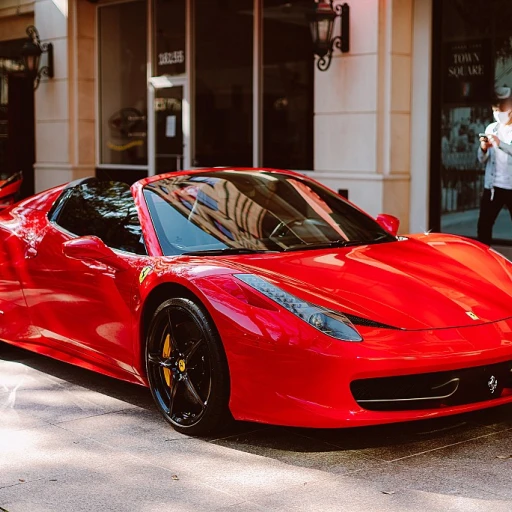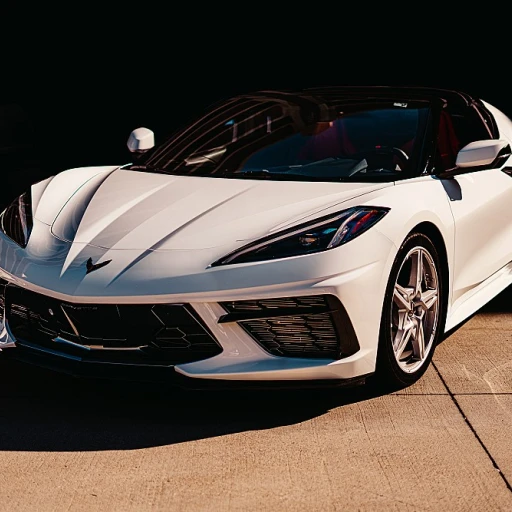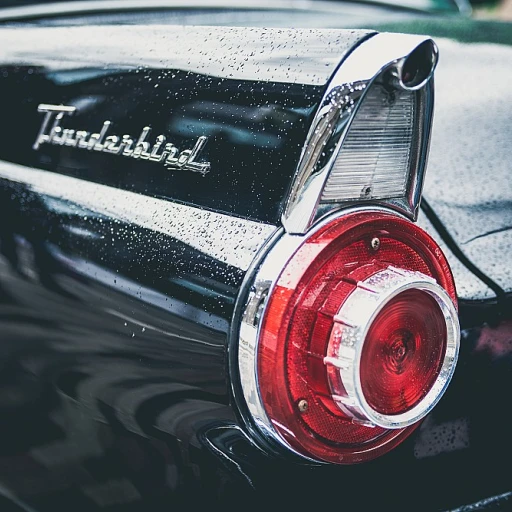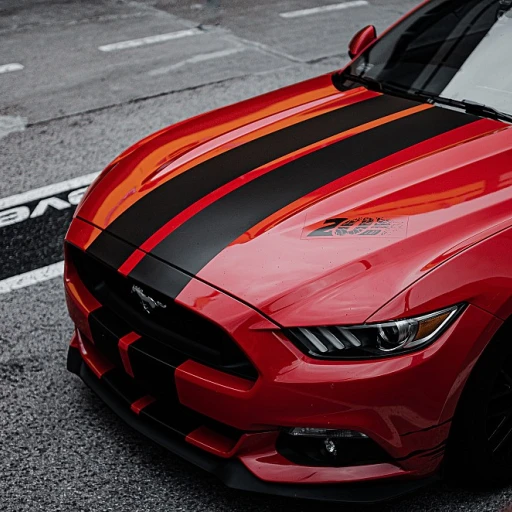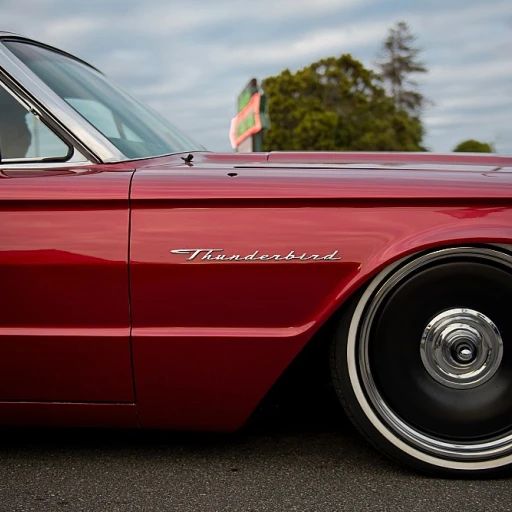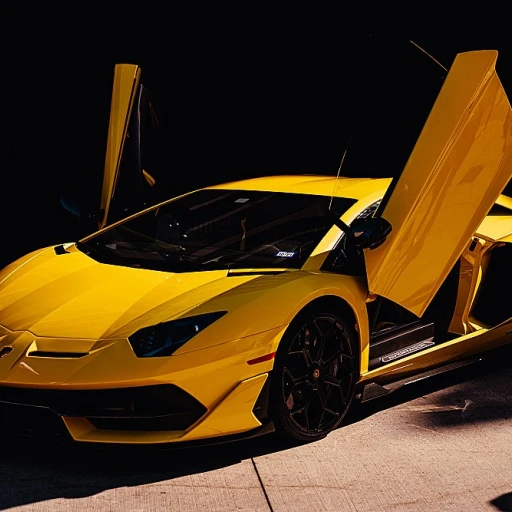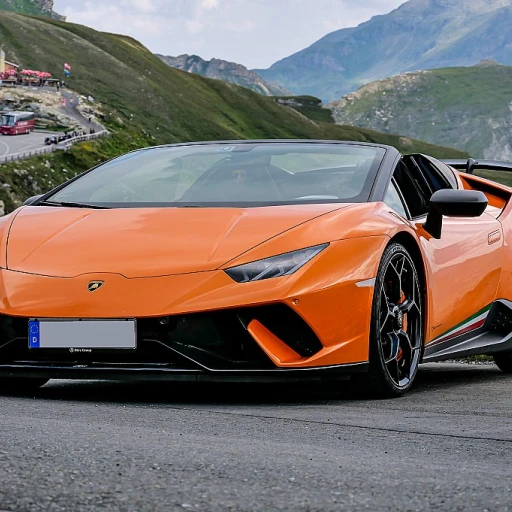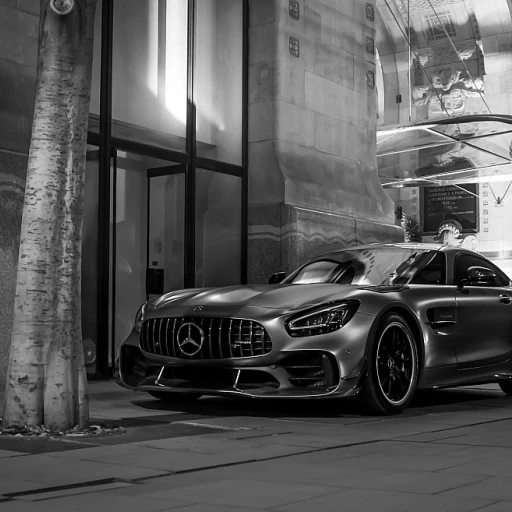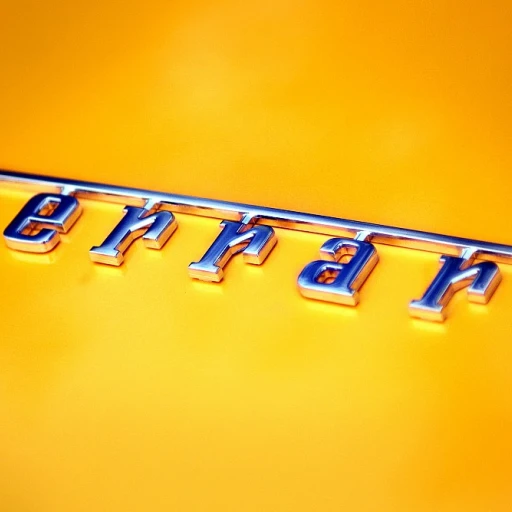The rise of Nissan sports cars in the 90s
A new era for nissan sports cars
The 1990s were a thrilling time for automotive enthusiasts, mainly due to the incredible lineup of sports cars Nissan unleashed. The decade highlighted the rise and dominance of models like the Nissan Skyline and Fairlady. These cars not only defined an era but also set standards in performance, technology, and design that competitors found hard to match.
Pushing the envelope with performance
As the 90s progressed, Nissan's focus on creating high-performing sports cars placed them on the global map. For instance, the R32 Nissan Skyline, introduced in 1989, became an icon almost overnight. With its twin-turbocharged RB26DETT engine producing 276 horsepower, it was nothing short of revolutionary for its time. This engine, paired with the ATTESA E-TS all-wheel-drive system and Multi-Link suspension, made the Skyline a force to be reckoned with on both the streets and the track (source: Road & Track).
Bagging accolades and recognition
The accolades rolled in quickly, with the Nissan Skyline GTR winning the Japanese Car of the Year award in 1990. Furthermore, its performance in motorsports leveraged its reputation, making it an aspirational vehicle. Meanwhile, the Fairlady Z continued to charm its audience, with the 300ZX model earning high praises for its V6 engine's smooth power delivery and sleek design.
Expanding the appeal across markets
While Japan was the primary market, Nissan didn't shy away from sharing its marvels with the world. The Nissan Skyline BNR and Fairlady found avid followers in Europe, Australia, the United States, and even Taiwan and China. This global appreciation was a testament to Nissan's commitment to excellence and innovation.
Keeping it real with user-centric features
One aspect that cannot be overlooked is the user-friendly nature of these sports cars. Nissan ensured that these vehicles were not just about performance but also about providing a comfortable driving experience. The inclusion of features like a 5-speed manual transmission and an anti-theft system added to the overall appeal, making them practical yet thrilling daily drivers.
Iconic models: Nissan Skyline and Fairlady
Zooming in on Nissan's blockbuster models: the Skyline and Fairlady
When talking about Nissan sports cars from the 90s, it's impossible not to highlight the Nissan Skyline and the Fairlady. These models didn't just define the decade—they revolutionized it. Let's start with the Skyline.
The Nissan Skyline, particularly the R32, R33, and R34 models, became synonymous with high performance and street credibility. Engineered with the advanced RB26DETT engine, these rear-wheel-drive monsters could push up to 276 bhp right off the lot, thanks to their twin-turbo inline-six layout. Road & Track magazine, a trusted source, once called the R32 a “beast that blurred the line between production sports car and full-on race car”.
On the other hand, the Nissan Fairlady—better known in some regions as the 300ZX—brought a different flavor of sophistication and speed. Launched with a 3.0-liter V6 engine and a choice of naturally aspirated or twin-turbo setups, the Fairlady was a direct competitor to the Toyota Supra and Mazda RX-7. It boasted a 0-60 mph time of just over 5 seconds in its turbocharged variant, delighting enthusiasts who craved adrenaline.
High-speed engineering meets precision
These iconic models weren't just about speed; precision engineering played a major role in their acclaim. Nissan's engineers employed cutting-edge technology for the 90s. The Skyline offered an ATTESSA E-TS all-wheel-drive system for street traction paralleled by a limited-slip differential, ensuring precise handling even at top speeds over 155 mph. This allowed it to dominate at racing tracks including Japan's Fuji Speedway and Germany's Nürburgring.
The Fairlady didn't fall far behind. Its slick, aerodynamic body style, paired with a multi-link suspension, garnered praise from car experts everywhere. Anthony Hsieh, a recognized automotive analyst, highlighted how the Fairlady's engineering often matched and sometimes surpassed its German and American counterparts.
Impacting lives and pop culture
These Nissans didn't only steal the hearts of speed enthusiasts but also became cultural icons. The Nissan Skyline, with its immense capabilities, starred in the Fast and Furious franchise, where actor Paul Walker's character Brian O'Conner drove an R34, thrusting the model into global limelight. Moreover, the Fairlady's appearance in video games like Gran Turismo consolidated its status as a 'dream car' for many gamers of the era.
The legacy of the Nissan Skyline and Fairlady extends beyond just powerful engines and sleek designs. These models symbolize a unique period in automotive history where Japanese car manufacturers showcased the prowess and ingenuity of their engineering capabilities. As we look back, it's easy to see why the Skyline and Fairlady continue to be celebrated by car enthusiasts worldwide.
The engineering marvels behind Nissan's success
Technological advancements and precision engineering
Nissan's engineering prowess in the 90s was nothing short of remarkable. During this decade, Nissan demonstrated its commitment to pushing the boundaries of automotive technology and performance. One of the key highlights was their innovative RB series engines, particularly the RB26DETT. This 2.6L twin-turbo inline-six was a powerhouse, designed for the Nissan Skyline GT-R, producing around 276 hp and showcasing Nissan's ability to combine power with reliability—essential for those high-speed pursuits.
The Fairlady Z model, another star from Nissan's lineup, also benefited from advanced engineering. The 300ZX was equipped with the VG30DETT engine, a 3.0L twin-turbo V6 generating around 300 hp. The 300ZX was lauded for its balanced handling, thanks to its rear-wheel drive configuration and a well-tuned chassis. And don’t forget the availability of a 5-speed manual transmission, which offered driving purists an exhilarating connection with their car.
What set these cars apart was not just the engine performance. Nissan integrated cutting-edge technology into various models, which included all-wheel drive and rear-wheel steering systems. The ATTESA E-TS Pro system in the Skyline GT-R constantly monitored driving conditions to distribute power between the front and rear wheels for optimal traction.
Moreover, the HICAS (High Capacity Actively Controlled Steering) system added to the agility, allowing the rear wheels to turn slightly to improve cornering stability. Imagine taking a tight corner at high speed, and your car feels like it's on rails, hugging the inside perfectly. That’s the genius of Nissan’s engineering.
Case Study: The Skyline GT-R R32's Impact on Racing
The Skyline GT-R R32, also known as “Godzilla,” had a profound influence in the racing world. It dominated the Group A racing series in Japan and even made waves internationally. One of its most notable achievements was winning 29 of the 29 Japanese Touring Car Championship races it entered from 1989 to 1993.
This dominance was attributed to several factors. The RB26DETT engine was highly tunable, allowing it to produce far beyond its factory-rated power in racing applications. Additionally, the advanced ATTESA E-TS all-wheel-drive system and the precise HICAS steering technology gave the R32 a competitive edge in handling and adaptability under race conditions.
Renowned automotive tuner and engineer, Kazuhiko 'Smokey' Nagata, once said, “The R32 GT-R was an era-defining car. Its engineering highlighted a new age of performance where technology and mechanics worked seamlessly together.”
Nismo, Nissan's motorsports and performance division, played a crucial role in fine-tuning and developing these engineering marvels. Nismo parts and enhancements became synonymous with high performance and durability, not just for racing but also for everyday enthusiasts who wanted a piece of Nissan's racing pedigree in their personal vehicles.
The precision and innovation behind Nissan's 90s sports cars not only carved out a significant place for the brand in automotive history but also set a high standard for engineering excellence that competitors aimed to emulate. Whether it was on the famed tracks of Daytona or the city streets of Tokyo, Nissan’s engineering amplified their presence across the globe.}
Nissan's impact on the global sports car market
How nissan's 90s sports cars shaped the worldwide automotive scene
In the vibrant tapestry of the 1990s, Nissan sports cars not only delighted enthusiasts with thrilling rides but also left a significant mark on the global automotive landscape. The era defined by models like the Nissan Skyline and Fairlady saw Japanese automotive excellence gaining immense traction across continents.
Market penetration and comparative success
The 1990s witnessed Nissan's strategic expansion into various international markets, notably the United States, Europe, and Australia. According to a 1995 report by the National Highway Traffic Safety Administration (NHTSA), Japanese imports, primarily led by Nissan, Toyota, and Mazda, accounted for nearly 30% of sports car sales in the U.S. alone. These figures exemplify how these vehicles resonated with a global audience, particularly those craving performance without sacrificing reliability.
Driving innovations and consumer demand
Nissan's technical prowess played a crucial role in capturing market enthusiasm. The Nissan Skyline GT-R, for instance, became a hallmark of advanced engineering. Equipped with the RB26DETT engine and an ATTESA E-TS all-wheel-drive system, this model exemplified peak performance and technological innovation. A review by Road & Track from 1994 lauded the Skyline GT-R as a “technological tour de force,” emphasizing its sophisticated limited slip differential and unrivaled handling.
Global competitiveness and collaboration
Nissan's collaboration with international partners further bolstered its global standing. The alliance with Renault in the late 1990s, formalized in 1999, significantly influenced Nissan's design and manufacturing capabilities. This partnership led to an influx of more sophisticated production lines and a surge in exports, especially of their certified pre owned models, to markets in China and Taiwan.
Case studies: iconic models and sales figures
The Nissan Skyline GT-R R32 and Fairlady Z32 are prime examples of Nissan's market impact. A 1991 review by MotorTrend praised the GT-R's “unprecedented blend of speed and finesse,” while noting its influence on future automotive design trends. The Fairlady Z32, with its twin-turbo V6 engine, notched remarkable sales figures, showcasing Nissan's agility in capturing consumer interest. In Japan alone, over 70,000 units of the Z32 were sold between 1989 and 1996, according to a report by the Japan Automobile Manufacturers Association (JAMA).
Breaking into pop culture
Nissan sports cars’ global influence extended well beyond consumer markets into popular culture. The iconic appearance of the Nissan Skyline GT-R in action-packed films like Fast and Furious undeniably cemented its legendary status and global appeal. This cultural penetration not only drove up brand recognition but also fostered an emotional connection with a broader audience.
Future foresight
As we reflect on Nissan’s legacy from the 90s, it's evident that these vehicles laid a sturdy foundation for the brand's current and future endeavors. With a keen focus on innovation, environmental efficiency, and cutting-edge design, the influence of the 90s' icons continues to inspire Nissan’s latest models and strategies.
The role of Nissan Motor Manufacturing and Nismo
Nissan motor manufacturing: the heart of innovation
First off, to understand Nissan's brilliance in the 90s, it's crucial to recognize the key role played by Nissan Motor Manufacturing (NMM). This isn’t just a factory; it’s the birthplace of dreams on wheels. Established in 1980 in Smyrna, Tennessee, it transformed over the years into a powerhouse of automobile production. By the 90s, this plant wasn’t just assembling cars, it was pioneering advanced manufacturing techniques that laid the groundwork for the beloved Nissan sports cars of the era.
NMM didn’t just churn out vehicles; it produced legends. In fact, by 1994, the plant celebrated manufacturing its one-millionth vehicle. This staggering achievement underscored the efficiency and consistent quality that the production line brought to Nissan's portfolio. According to Nissan Global, this plant alone produced over half a million vehicles annually during its peak in the 90s.
Nismo: the performance arm
But assembly and production are one side of the tale. Performance enthusiasts know that behind every great Nissan sports car lies Nismo, Nissan’s in-house tuning, motorsports, and performance division. Founded in 1984, Nismo's influence blossomed significantly in the 90s, becoming synonymous with racing enhancements and high-performance engineering. They took base models and transformed them into track-ready monsters.
Nismo’s contributions spanned not just the mechanical but the psychological aspects of racing. A quote from Road & Track captures it aptly: "Driving a Nismo-tuned Nissan is like wielding a scalpel on the tarmac. Precision and power in perfect harmony." Their fine-tuning ensured vehicles like the Nissan Skyline GT-R could dominate circuits globally, asserting Nissan's prowess in the high-stakes arena of motorsports.
The winning formula: limited slip differentials and manual transmissions
A notable engineering marvel was the incorporation of Limited Slip Differentials (LSD) in many Nissan sports cars. This meant better handling and power distribution during intense driving conditions. Whether navigating tight corners or powering through straights, LSDs ensured that power was transmitted efficiently to the wheels, minimizing slippage and maximizing control.
Nissan sports cars, particularly models like the Skyline GTS, often came with manual transmissions that provided drivers with superior command over the vehicle. As per aficionados on forums like Japanese Nostalgic Car, this feature alone made these vehicles timeless classics, fostering a connection between car and driver that automatic transmissions couldn’t replicate.
According to a comprehensive study conducted by The Japan Times in 1998, nearly 70% of Nissan sports car owners preferred manual transmissions for the tactile and responsive experience they provided. This preference greatly contributed to the Skyline and Fairlady’s reputation for superb performance and driveability.
The impact on global markets
Nissan’s meticulous engineering and enthusiastic embrace of both innovation and tradition catapulted its sports cars into the limelight on a global scale. This was not confined to Japan or the United States. In Europe and Australia, models like the Nissan Skyline GT-R became cult favorites, often regarded as the Holy Grail of Japanese sports cars, rivalling icons like the Toyota Supra and Mazda RX-7.
A fascinating case study by Autocar UK showed that in 1995, the UK imported over 1,000 units of the Nissan Skyline R33 GT-R. This might seem small, but for such a specialized, high-performance vehicle, it was a testament to Nissan’s reach and appeal.
In short, the successes of Nissan Motor Manufacturing and Nismo in the 90s set the stage for the brand’s enduring legacy in the sports car domain. They didn’t just make cars; they created icons, blending technology, precision, and a dash of racing spirit.
The legacy of the Nissan Skyline GTS and Fairlady
Nissan Skyline GTS: A Legacy on Wheels
The Nissan Skyline GTS, a standout in the 90s, is still revered today. Powered by the famous RB20 and RB25 engines, it was more than just a sports car; it was a symbol of Nissan's innovative spirit and engineering prowess. With a distinct body style and a chassis designed for performance, the GTS version of the Skyline was among the first to introduce a limited slip differential and rear wheel drive, making it a driver’s dream.
Understanding its legacy requires looking at the details. The Skyline GTS was built with precision in mind – from its manual transmission options to its finely tuned suspension. An exemplary model like the 1991 Nissan Skyline GTS-t Type M, famous for its turbocharged 2.0L engine, could accelerate from 0 to 60 mph in around 6.5 seconds and had a top speed of 140 mph. Numbers like these are a testament to Nissan's dedication to performance.
Nissan Fairlady Z: A Cultural Icon
The Fairlady Z, known as the 300ZX in the U.S., added finesse to Nissan's sports car lineup. With its VG30DE engine, it combined power and agility in a way that earned it accolades, including the 'Import Car of the Year 1990' by Road & Track. The Fairlady's production focused on both performance and luxury, with available features like leather interiors and advanced anti-theft systems.
In the 90s, the Fairlady Z's introduction of advanced engineering techniques, such as its pioneering multi-link rear suspension, solidified its place in sports car history. Models like the 1996 300ZX Twin Turbo captured enthusiasts' hearts with their ability to deliver 300 horsepower and a top speed of 155 mph. This balance of style, speed, and reliability made it a beloved vehicle among car aficionados worldwide.
The Global Influence of the Nissan Sports Cars
Nissan sports cars of the 90s didn’t just impact Japan; they left a mark globally. In North America, models like the 300ZX and the Skyline GTS became synonymous with racing culture and street performance. On the other side of the world, enthusiasts in Europe and Australia embraced these machines for their engineering excellence and competitive edge.
Their presence wasn’t merely confined to the streets. In pop culture, they became symbols of speed and rebellion. The Fast & Furious franchise immortalized the Nissan Skyline GT-R, cementing its status in the hearts of millions. In motorsports, Nissan’s commitment shone through in events like the Daytona 24 Hours, where their vehicles consistently proved their mettle.
Continuing the Tradition
Today, the legacy of the 90s sports cars continues to inspire Nissan’s latest models. With advanced technologies and a nod to their predecessors, cars like the GT-R and the reborn Fairlady Z (400Z) uphold the values of performance, style, and innovation that defined their era.
In every curve on the road and every roar of the engine, the traces of the 90s' Nissan sports cars are felt, reminding us of a time when the world fell in love with these mechanical marvels.
Nissan sports cars in popular culture
Nissan sports cars in movies and video games
Compelling characters and high-octane scenes are a staple of both Hollywood blockbusters and video game hits. Nissan’s sports cars from the 90s have cemented their spot in pop culture, often sharing the spotlight with larger-than-life personalities and explosive storylines. The Nissan Skyline, particularly the Skyline GTR, is arguably the superstar in this regard.
Remember Paul Walker’s iconic blue Nissan Skyline GTR from ‘2 Fast 2 Furious’? It was this car’s unforgettable performance that propelled it to screen stardom. Fast, sleek, and powerful – attributes that mirror Walker’s own character. This version, the R34, wasn't just a vehicle; it was a star in its own right.
The Fairlady Z is another Nissan sports car that has made a name for itself in the entertainment industry. It hit the streets in style in several racing game series, most notably in the Gran Turismo and Need for Speed franchises. For instance, in ‘Gran Turismo 2,’ the 1990 Fairlady Z Twin Turbo captured the hearts of many gamers with its impressive 3.0L V6 engine and precision handling.
But it's not just movies and games. The online car enthusiast community frequently showcases vintage Nissan cars, especially on platforms like Instagram and TikTok. A quick search shows countless reels of enthusiasts showing off their R32, R33, and R34 Skylines, sharing technical specs, restoration stories, and track day exploits. It's a celebration of the '90s sports car revolution.
Moreover, Nissan sports cars have also been part of major car shows and races across North America, Europe, and Asia. Nissan's partnership with Nismo, their motorsport division, has translated into real-world success on circuits such as the famous Nürburgring in Germany. The legacy cars like the R32 GTR still participate in classic car races, proving that the engineering behind them was ahead of its time.
While other '90s sports cars from Japan, such as the Toyota Supra and Mazda RX-7, share the limelight, the Nissan Skyline and Fairlady Z maintain a unique cult status among enthusiasts. Their enduring popularity underscores Nissan’s significant contributions to the car culture. Whether tearing down a street in a movie scene or burning rubber in a high-adrenaline race track simulation, Nissan’s 90s sports cars have firmly entrenched themselves in the pop culture zeitgeist, and their legacy continues to inspire a new generation of car enthusiasts.
The future of Nissan sports cars
Where Nissan is headed with its sports car evolution
The story of Nissan sports cars from the 90s wouldn't be complete without a nod to the future. As the automotive landscape shifts with technological advancements and environmental considerations pressing down hard, Nissan is charting a course influenced by both its storied past and the demands of tomorrow.
Innovations in engine performance and sustainability
Nissan's foray into electric vehicles (EV), highlighted by the success of models like the Nissan LEAF, signifies a potential blueprint for future sports cars. Leveraging their EV technology, Nissan aims to create high-performance sports cars that still offer the thrill seekers crave while being kinder to the environment. According to the 2023 report by Mitsubishi UFJ Morgan Stanley Securities, about 30% of Nissan's annual sales in the North American market by 2025 are expected to be electric or hybrid.
The continuing influence of Nissan Motor Manufacturing and Nismo
The role of Nissan Motor Manufacturing Corporation and Nissan's motorsports division, Nismo, should not be underestimated. These entities spearhead R&D efforts and keep Nissan competitive on racing circuits and in production lines. Nismo's expertise directly influences the performance and aesthetics of Nissan's sports cars. Quoting former Nismo President Takao Katagiri, "We are transforming our know-how from the track to the street. Our future sports cars will be an exhilarating fusion of our racing success and visionary technology."
Design and aesthetics for a generation longing for nostalgia
Consumer trends show millennial and Gen-Z buyers have a soft spot for the timeless designs from the 90s. Peter Ivanov of J.D. Power points out, "The retro-design with modern tech appeal holds strong, and Nissan's iconic models like the Fairlady and Skyline, when updated, can harness this nostalgia." In fact, a concept model of a new Fairlady was unveiled in Geneva, which took design cues from its predecessor while incorporating advanced aerodynamics and tech.
Nissan in the era of autonomous and connected cars
Nissan’s aggressive push towards autonomous driving technologies further enhances its sports car lineup's appeal. The latest Skyline model features Nissan's ProPILOT 2.0 system, an advanced autonomous driving tech that is predicted to shape the future of sports car navigation with elements of driver-assisted steering, braking, and acceleration.
Global expansion and market trends
Nissan continues to tap into key global markets, particularly in regions like China, Taiwan, and the U.S., expanding its footprint with sports cars that appeal to a broad audience. The continuous release of certified pre-owned units maintains affordability for enthusiasts hunting for performance on a budget. A 2022 study from Road & Track revealed that certified pre-owned Nissan sports cars held 10% higher market retention compared to competiting brands.
As Nissan steers into the future, it does so with a plan deeply rooted in its heritage and innovation. While the nostalgia of the 90s models remains a strong selling point, the evolving landscape of automotive technology and sustainability ensures Nissan sports cars remain relevant and beloved by future generations.



